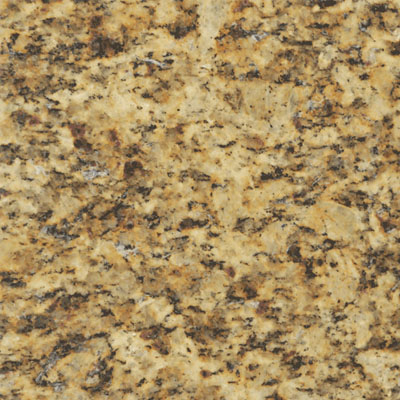
Santa Cecilia Granite
Santa Cecilia Granite (Commercial) Product Description
OTHER INDUSTRY NAMES (AKA): Giallo Cecelia, St. Cecilia Classic, Santa Cecilia Granite, Amber yellow
STONE TYPE: Granite
COUNTRY: Brazil
PRIMARY COLORS: Yellow, Golden
VARIATIONS: Medium
FREEZING CLIMATE: Yes
EXTERIOR USAGE: Yes
AVAILABLE SIZES:
Tile : N/A
Slab : 2 CM, 3 CM
Mosaic : N/A
Landscape : N/A
Prefabricated Countertop : N/A
AVAILABLE FINISHES: Polished
GREENGUARD Indoor Air Quality Certified®
NSF Certified®
Description: Santa Cecilia granite from Brazil is a beautiful beige background with burgundy, gold and dark gray veins.
Comercial Stone Disclaimer
Commercial stone may include some or all of the following characteristics that are typically undesirable and are perceived as defects. These characteristics can be caused naturally in the Earth, or due to the mining and fabrication processes in their respective quarries.
Fissures:
Fissures are a naturally occurring stone characteristic. It is caused when two magma flows meet in the Earth. Then when the stone is formed, this union is visible as a vein in the stone. Although present in most granite, commercial grade materials may contain a higher concentration of fissures or larger fissures that can affect the structural integrity of the stone.
Inclusions:
Inclusions are also naturally occurring characteristics of stone. Most stones have inclusions and may give the stone an exotic look in the right proportions. However, inclusions in stones that typically have a consistent pattern may cause an undesirable look.
Gauging:
Stone slabs are quarried from the Earth as huge blocks of stone. Blocks are transported to manufacturing facilities, where they are sliced like a loaf of bread and are gauged to 2cm and 3cm thicknesses. All stones have a slight variation in the thickness, ranging from 1/64 to 1/8. However, in commercial material, the difference in thickness can be extreme; in some cases up to 3/8” have been seen.
Resin & Pits:
Once the stone is cut, it is placed in production for polishing. During this process, resin is applied to fill pits and chips in the stone to give it a smooth and shiny finish. Pits are common in most stone and are caused by various reasons. The most common reason for pits is the mica content in stone. The polishing process causes the mica to flake, creating shallow pits that cannot be filled or polished. Slab manufacturers around the world may produce a finished product with a poor resin or no resin finish, giving the stone a dull look with pits. These stone should be considered and sold as commercial grade products.
Click on the button below to view more image examples of this stone in a new window.
View More on Bing.com
Powered by Bing.com
Natural Stone Disclaimer
Pits, fissures and dull spots, some granites exhibit these characteristics more than others, and they may also be more or less visible depending on the lighting conditions present in a room. Pits, fissures and dull spots do not compromise the integrity of the granite in any way; they are natural characteristics and will not impair the function or durability of the material. They are an expression of nature.
Product categories and classifications such as Granite, Marble, Travertine, Limestone, Quartzite, etc. are based on generally accepted industry acceptance. They do not necessarily reflect the geological composition of the material. In many cases, these materials are technically made of a different geological makeup. For example, many stones are commonly known as granites, but geologically, they are actually Charnockites, Polimitic Mataconglomerates, and any of other various different geological stones.
In addition, many stones commonly referred to as marble are geologically limestone. Products shown on the StoneTex, LLC website reflect the industry classification of products and do not necessarily reflect the geological composition. StoneTexas, LLC makes no guarantee or representation of the geological composition of any stone. In addition, the category reflected on our website, should not neccesarily be used for customs classification.
Color Disclaimer
We strive to make the colors shown as accurate as possible. However, due to the inconsistencies of various monitors, the colors on your screen may not be an accurate depiction of the actual color. Screen images should be used as a guide only.
